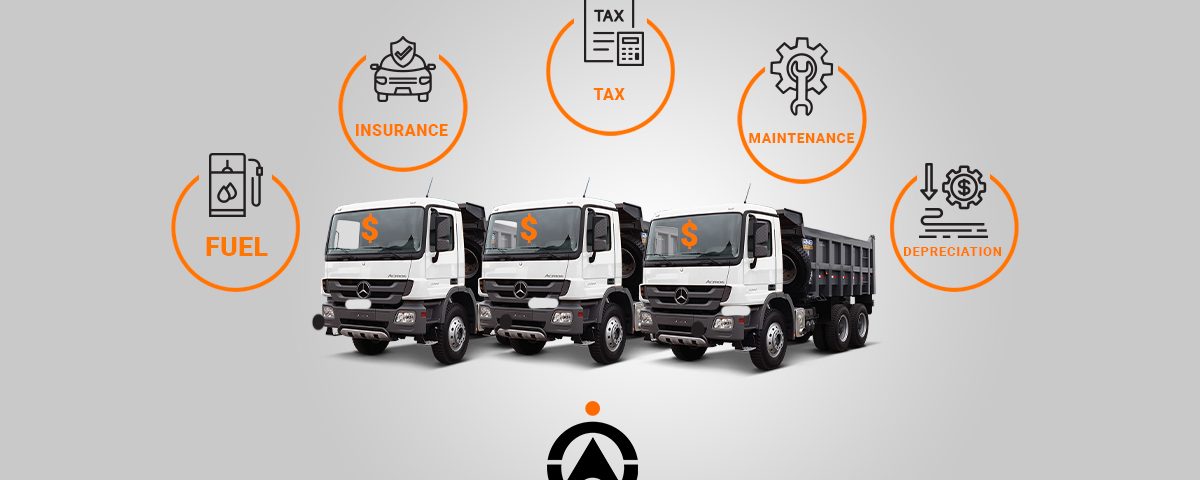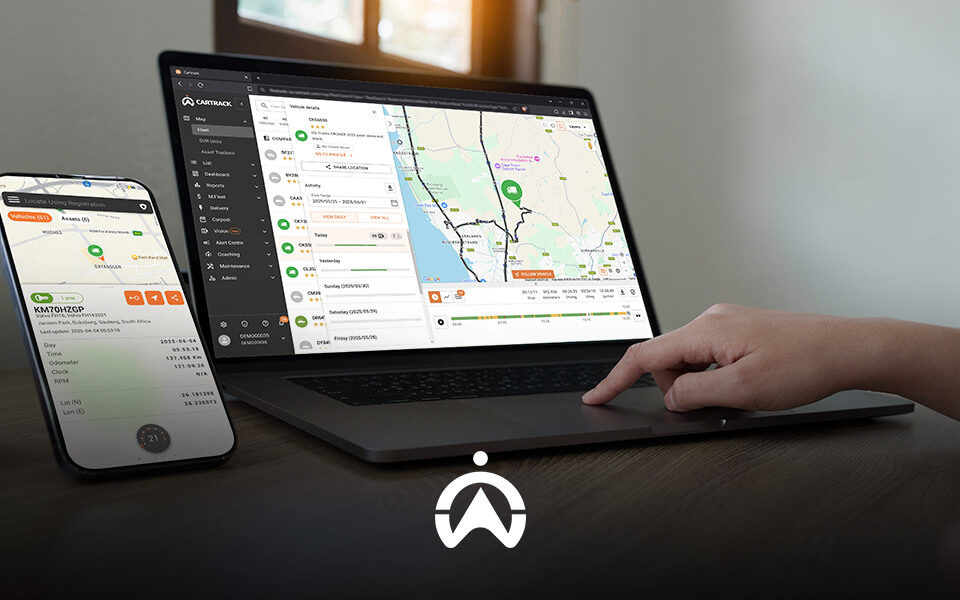When Is The Perfect Time To Change Your Fleet Vehicles
If you have a fleet of vehicles, this one’s for you.
Did you know that keeping your fleet of vehicles too long can lead to excessively high repair costs, exceeding their resale value? Replace them too soon, and you might be throwing money down the drain.
So when is the perfect time to upgrade your fleet?
The answer to that question is a guessing game, if you don’t have the correct asset-tracking software. With it, you can spot clear signs of exactly when to upgrade your fleet, a vital tool to help you keep your fleet reliable, cost-effective and safe.
From top to bottom, here’s everything you need to know about vehicle replacements.
In this article, you will:
- Uncover the importance of understanding your fleet’s life cycle
- Find out the benefits of a vehicle replacement plan
- Learn how to calculate your vehicle replacement timeline
- Spot clear signs of when it’s time to replace your vehicles
- Discover some extra useful tips for upgrading your fleet
- Uncover how Cartrack Nigeria helps you easily replace your vehicles
Understanding your fleet’s life cycle
Say goodbye to cost-draining vehicles and hello to a new and efficient fleet.
The first step is to record and understand your fleet’s lifecycle or lifespan.
This includes tracking and managing various factors about your vehicles such as acquisition costs, cost of insurance and maintenance, optimisation and efficiency, breakdown and downtime risks, disposal, and resale prices.
Why is this crucial?
You need to know exactly where you stand with your vehicles to sell them at the most appropriate time.
Asset depreciation is also the single largest fixed cost in a fleet. That’s why you’ve got to maximise your fleet’s lifecycle, performance and utilisation, to get the most out of it.
You can also quickly spot inefficiencies, such as constant breakdowns and repairs and then upgrade before it costs you too much.
Since maintenance and servicing costs count for at least 7% of vehicle expenses, you’ll need up-to-date maintenance records to keep tabs on this.
There is also great value in having a good replacement plan and schedule to assist you along the way.
Check out these benefits:
.jpg)
Perks of a vehicle replacement plan
- Avoid major repairs: When you replace vehicles at the right time, you can prevent spending excessively on maintenance and repairs, and also reduce the likelihood of major breakdowns and downtime that affects business productivity.
- More equipped vehicles: Newer vehicles often have the latest technology for better fleet safety such as automatic emergency braking or in-cabin warning signal features.
- Fuel savings: Save on fuel by removing vehicles from your fleet that are increasing your fuel costs dramatically, and more than they should.
- Higher resale value: With a strategic replacement plan, your vehicles will be in well-maintained and decent condition, which will enable you to sell them at a better price.
- Safer, happier drivers: Keeping your fleet safe through regular safety upgrades, shows that you care about the well-being of your drivers. This helps increase their morale and productivity.
Ready to sell and cash out? We’ll help you put a plan into action:
When is the perfect time to sell your vehicles?
This depends on multiple factors and can vary for each fleet. It all comes down to the right timing for a fleet owner.
These could be assessing the age of the vehicles, mileage, makeup, size, use, maintenance costs, and technological advancements on the market.
A good “go-to” indicator is to find the point where the vehicle’s cost price and operating costs exceed buying and maintaining a brand-new vehicle.
From the get-go and for more accuracy, you can create a replacement timeline for your vehicles, using advanced data from Cartrack’s fleet management system.
Let’s head to the drawing board, for a standard 5–7-year-old vehicle:
How to calculate your vehicle replacement timeline
Year 0: Gather the purchase price, fixed costs, and any taxes and licensing fees that come with the vehicle. Then, record the day-one mileage, maintenance, and fuel costs of the vehicle, if it is not new.
Year 1: Record mileage regularly and the costs incurred in the first year to understand the asset’s utilisation. Cartrack’s software can help with this. This includes calculating the TCO (total cost of ownership) or total costs to operate a vehicle and its CPK (cost per kilometre).
Generally speaking, the total cost to operate a fleet vehicle is about 40% of expenses, which includes the initial purchase price, depreciation (the decrease in value over time), insurance, registration fees, licensing, financing, or leasing costs. Fuel costs are between 15% and 30% of a fleet’s total expenses.
That’s why you need to keep a record of this from day one. It will help you clearly see if you’re crossing any cost boundaries.
Be better prepared for the next year, with an estimate of maintenance costs. This will allow you to make cost changes if needed.
Year 2 and so on: Gather mileage and costs as well as calculate the TCO and CPK compared to the previous year. As the TCO and CPK fluctuate, you can begin to gauge whether an asset’s overall value is increasing or decreasing. As a vehicle ages, you should assume that costs will increase.
When to replace: If the TCO and CPK significantly fluctuate with each year or at a certain mileage benchmark, it might be time to replace that vehicle.
Additionally, if you’ve been managing your fleet for a while, then you’ll begin to see trends or signs of your assets declining.
7 sure-fire signs it’s time to replace your vehicle
- Breakdown after breakdown: And cost after cost, on maintenance repairs. If this is happening often, then keeping the vehicle is not worth it. The reduction in repair costs and downtime will help you save money, making the investment in a new vehicle worthwhile.
- Too much fuel usage: On average, a fleet vehicle consumes around 30 or 40 litres of fuel for every 99km travelled. Fuel is one of the biggest expenses for fleet managers. With the ever-rising fuel costs, it might be much better to opt for newer or adequate vehicles with better fuel economy to help cut fuel costs.
- Over 100 000 km: Vehicles with more than 100,000 km may be considered “middle-age”, which is the point at which maintenance costs start adding up. Mileage is always an indication of wear and tear. If it’s too high, it might need some major repairs. However, as we already know, we shouldn’t assess a vehicle’s age in isolation but look at other factors such as the vehicle’s condition, maintenance history and service records. This helps give a more accurate assessment of a vehicle’s long-term viability and endurance.
- Excessive age: Even if a vehicle’s mileage is still relatively low, fleet vehicles that are five years or older should be considered for a replacement. This is because most vehicle warranties have expired and repairs will become more expensive.
- Unhappy drivers: Your drivers will be the first to tell you if your vehicles are not in good condition. Any scepticism from them should be one of your primary concerns. Especially, because you want to keep your drivers and fleet super safe, avoiding costly medical claims and hospital bills due to injuries, as a result of an unsafe fleet.
- Outdated technology: Having the latest technology helps keep your fleet running at peak performance, and reduces the risk of accidents, so your employees and cargo are extra safe. This could include built-in GPS navigation systems that assist drivers with directions for safer deliveries or there could be rear-view backup cameras and bumper sensors, for additional safety.
- Vehicle condition: If a vehicle has extensive exterior damage and has your company’s branding on it, it could reflect poorly on your reputation and be costly to fix. In this case, it might be better to sell it and get something that portrays a more professional image of your company.

7 extra tips for upgrading your fleet
- Have a plan
We know that you need a vehicle replacement plan, so you don’t rush into changing all your vehicles and effectively spread out costs and timing. You also want to match the correct vehicle to the job. You need to know what vehicles to look for to ensure it meets your requirements. For instance, if you are transporting heavy materials, then the correct vehicle size is needed to handle the required loads and cargo. The same goes for choosing specific vehicles that are more suitable for tar or gravel roads, as a result of your service and fleet requirements.
- Price of buying and selling.
Your vehicle’s value starts depreciating the moment you drive it off the showroom floor. To leverage its value better, you can compare the purchase price with the long-term operational costs in line with inflation, and strike the right balance. Spending too little could leave you with endless maintenance issues and downtime. Spending too much, and you could end up with an expensive asset that you don’t need. And when the time comes to sell your vehicles, you’ll need to research the market value of similar vehicles to find a fair selling price.
- Look at different funding methods
Weigh out your options. Leasing vs financing vs paying cash. There are pros and cons for each. However, leasing is becoming increasingly popular. Leasing fleets are found to be 10 -15% more cost-efficient than owning the vehicle, considering all other fleet expenses. With this option, you can upgrade your fleet every few years for minimal cost and fuss, allowing you to preserve your cash flow and return the vehicle when you’re done with it. In the case of financing, it’s best to look at the most cost-effective options.
- Maintenance history and repairs
You want a vehicle that will give the least amount of problems. It’s important to check out the maintenance history of the vehicle you want to buy. Everything from the vehicle’s fuel consumption, performance, repair history and costs of replacement parts, to the manufacturer’s reputation, should be on your vehicle assessment list. Good background checks can save you from costly repairs in the long run.
- Check out the associated costs
Look beyond the initial purchase price of the vehicle and budget for other extra costs. This could be maintenance and service expenses, insurance, and tax costs associated with certain models. Additionally, consider the resale value of the vehicle, as some vehicles retain their value better than others over time, and see if it is a worthwhile fit.
- Must-have vehicle specs
You want to know if what you’re buying is actually equipped to carry out your fleet activities successfully. Your fleet of vehicles should have the best specs possible, to keep your fleet safe, productive and efficient. For example, does it have an advanced driver assistance system to help reduce the chance of major crashes and keep your drivers safe? Or why not look at other features, such as partition walls, shelving, or drawers, to have a more organised vehicle for daily tasks?
- Be prepared to answer questions
Something not to forget is to consider your whole team when planning vehicle upgrades, as it could affect their productivity. They will need to know how it will be rolled out and how long it will take to get done. You could send out an email or document to your employees, outlining the changes that will be taking place, and how they impact everyone.
%20(1).jpg)
Experts reveal that 60% of companies aren’t aware of the possibilities of using rich data to improve their operations.
No wonder you need a bunch of data insights, to create a replacement cycle too.
A lot to take in? Don’t worry, Cartrack Nigeria’s technology does it all.
Say hello to a perfectly-timed upgraded, safe and efficient fleet
Second-guess yourself less and plan more. Understand your vehicle’s lifecycle with these top Cartrack Nigeria features:
- Maintenance tracking: Check the health and performance of your vehicles, to know when they are below par, with maintenance history reports. Service your vehicles at regular intervals and keep them in good condition, with maintenance alerts. Use this to maintain your vehicle’s warranty, and maximise its lifespan.
- Asset utilisation rates: This helps you monitor vehicle usage and their functioning capacity, and see if they are being used correctly. If they are underutilised, then there might not be a need for them, so managers can sell them and invest the money which will give them a better return. If they are overworked, then they might have more maintenance issues, or you might need to purchase another vehicle for your fleet.
- Fuel consumption reports: Use these to assess if your vehicles are using more fuel than necessary. This could mean that they are inefficient, outdated, have maintenance issues or there is fuel theft. Replacing such vehicles with newer and fuel-efficient models can help you save on fuel. You can also take this data and make vehicle comparisons, so you can choose vehicles with better fuel economy. Sudden fuel spikes could mean possible fuel theft, which means there is no need to replace your vehicles, but rather open an investigation.
Take this data from Cartrack Nigeria and create the best vehicle replacement plan out there. Walk away as a super equipt fleet manager, with everything you need to manage your vehicle upgrades, from the ground up.



